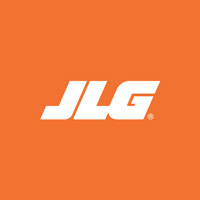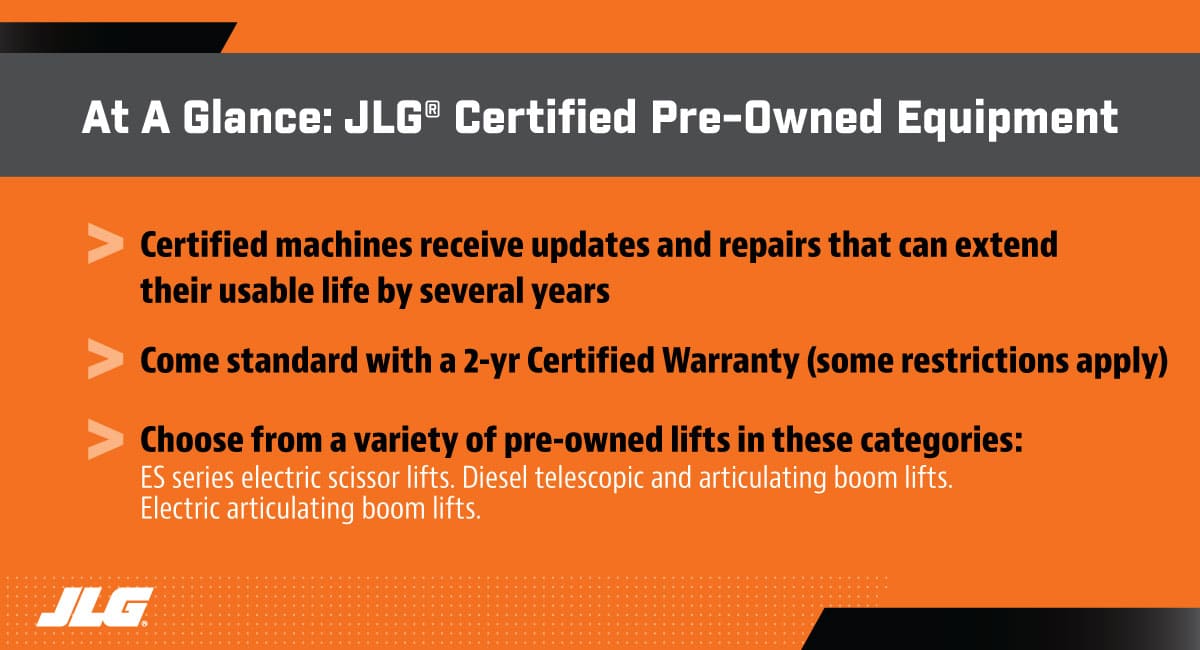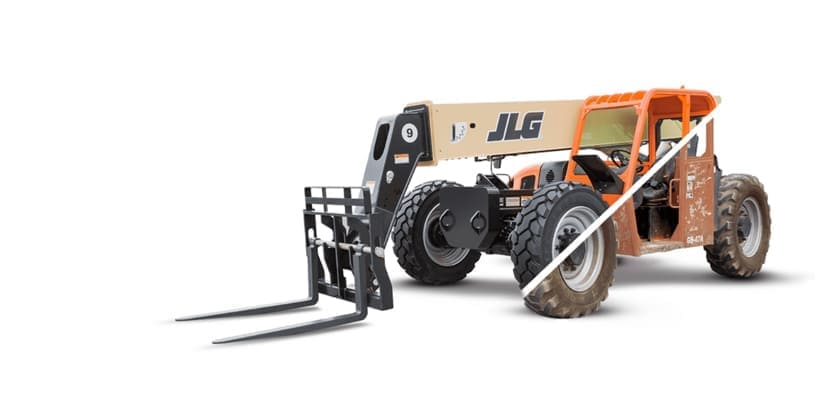 JLG Industries, Inc.
JLG Industries, Inc.
World-leading access equipment manufacturer
____
McConnellsburg, PA
Fleet managers often find themselves walking a fine line between equipment cost and performance. Purchasing or renting new lift equipment typically requires a large financial investment and isn’t always practical.
Alternatives include buying used or reconditioned equipment. Businesses who go this route should understand the difference between used and reconditioned aerial equipment, as well as know what to expect from both.

Used versus reconditioned
Used equipment is exactly that — used. Little to nothing was done to enhance or guarantee the performance of this equipment — unless it’s certified. Depending on the vendor, certified used equipment may have undergone comprehensive inspections and include warranties and annual inspections in the purchase price. But keep in mind, what’s considered certified used varies by equipment provider.
JLG introduced the industry’s first certified pre-owned aerial equipment program in 2016, allowing customers to have blended fleets and mitigate variable operating costs such as warranties. The certified pre-owned program represents a cost-effective way to update fleets with refreshed, job site-ready, warranty-backed machines and is estimated to add several years of useful life to machines.
Like certified pre-owned programs, reconditioning programs also vary from one provider to another. Reconditioned equipment typically undergoes more extensive work than certified used equipment, including countless inspections and repairs. In some cases, the equipment must pass numerous tests and code requirements well beyond those required of certified used equipment.
How is equipment reconditioned?
When considering the purchase of reconditioned equipment, it’s important to be sure the equipment was reconditioned by an original equipment manufacturer (OEM), like JLG. Best practices include a rigorous process requiring a complete teardown of the machinery and thorough inspection and repair of electrical, drive train, hydraulic and structural components. Boom structures should also be completely disassembled, and engines removed, evaluated and resealed or rebuilt.
Comprehensive reconditioning programs also include inspection of batteries, cables, chains, alarms, filters, hoses, cylinders, transmissions, axles and brakes. These components should be adjusted, resealed, or replaced as needed. Replacing damaged or worn components with factory-approved OEM parts allows less room for error in the field.
Routine maintenance, including oil analysis and cooling system flush/fill, should also be performed. Additionally, the equipment should be power blasted to remove old paint prior to recoating and re-assembling.
When reconditioning is completed, the vendor should test the machine to OEM equipment standards to ensure it meets the same quality standards as a new unit. Reputable sellers include a warranty to back up their work.

Finding the right vendor
When you’re ready to buy, it’s important to find a seller whose equipment meets the standards outlined above. Some items to ask the vendor include:
- References from other customers for used, certified and reconditioned equipment.
- Is there a warranty for the equipment, and what does it include?
- What is the equipment’s maintenance history?
- Can the equipment be test-driven?
- Will the seller allow a third-party to inspect the equipment?
Benefits of used/reconditioned equipment
Budget constraints often drive purchase decisions. When resources are limited, certified used or pre-owned equipment can be a more affordable option over new or reconditioned. When several pieces of machinery are required, reconditioned equipment is an efficient way to grow a fleet while effectively managing budgets.
It’s important to note that despite Tier 4 standards, Tier 2 and Tier 3 engines rebuilt as part of a reconditioning process need only meet industry standards to which they were originally built. This allows the owner to stay compliant while holding on to equipment longer, maximizing their investment.
Reconditioning can also be considered a “green” alternative to disposing of a machine. It reduces the amount of material destined for landfills and saves 12 tons of steel, water, and other resources compared to manufacturing a new unit. However, used and reconditioned machines may not always comply with current emissions standards, which should be checked prior to purchase.
While the demand for certified used and reconditioned equipment grows, companies must remain vigilant during the buying process. Taking time to select a trusted vendor and understand the scope of work included in their reconditioning process will allow businesses to make informed and smart decisions about their equipment purchases.
To learn more about high-quality used MEWPs available from JLG, click here.
Or, contact JLG used equipment representatives directly to request a quote at 844-JLG-USED (554-8733).
Want to stay up to date with industry news and trends similar to this? Make sure you subscribe below to receive monthly updates from Direct Access with newly posted content so you never miss important information.